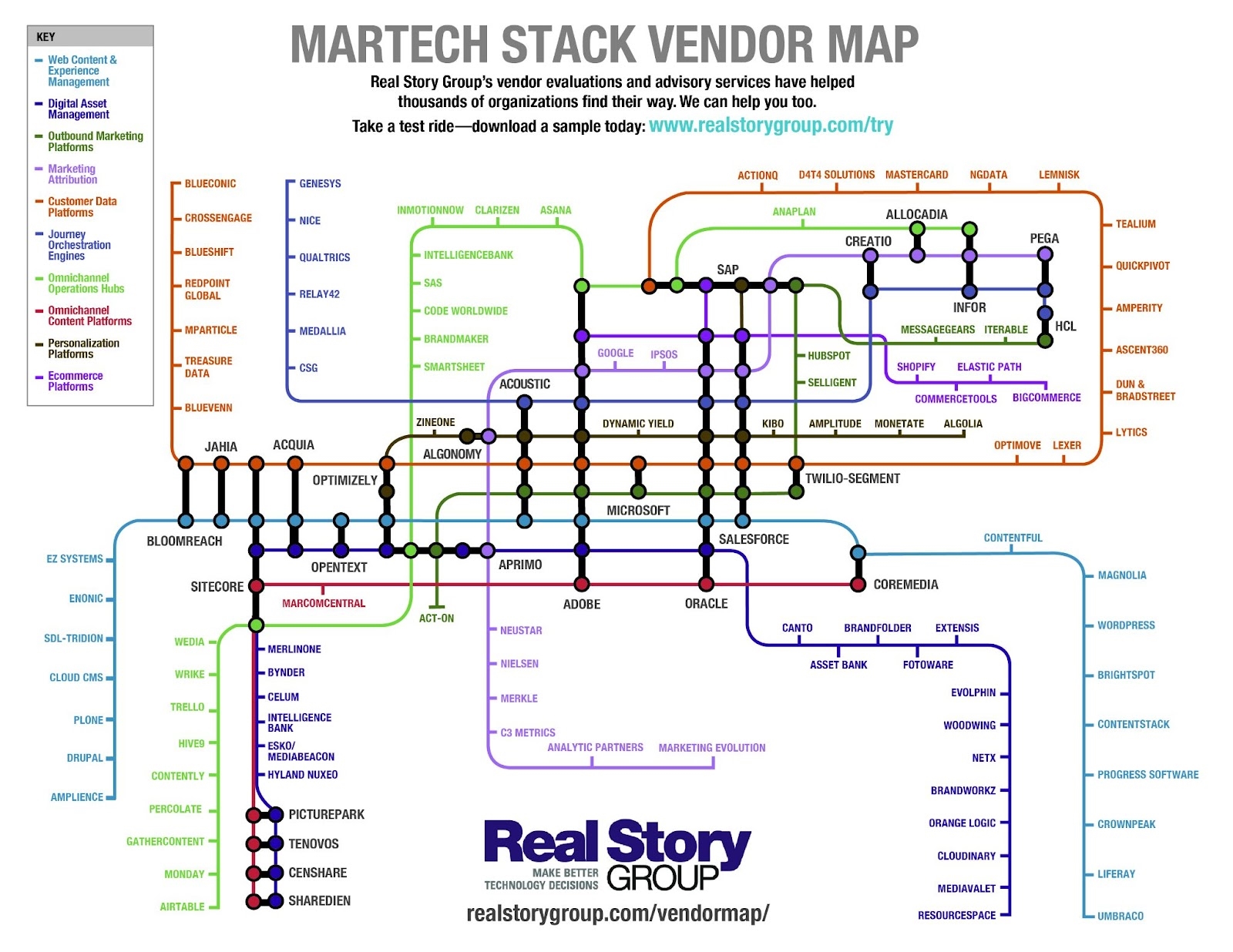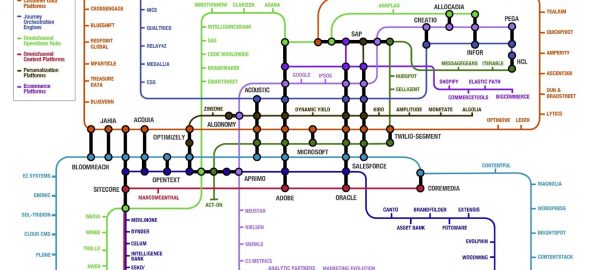Top five predictions for what will remain unchanged about marketing technology in the next ten years.
During my MarTech Master Class workshop, “The Right Way to Buy Marketing Technology,” I received a very interesting question from a participant.
What five things do you think will remain unchanged about marketing technology in the next ten years?
The question made me pause because usually I receive queries about what will change, as martech leaders try to “skate to where the puck is going.” In a fast-paced martech world that affords too-little time for reflection, it’s useful indeed to think about continuity, among other reasons, because it can help focus your energies and keep you from wasting time chasing ephemeral fads.
So herewith are my top five predictions for enduring trends.
1. Primacy of customer data
Effectively managing customer data is table stakes for prospect and customer digital engagement. Most of us haven’t been doing this very well. Getting on top of customer data management will likely become a decade-long (or more) pursuit.
At RSG, we advise many large enterprises on CDP evaluation and selection. The nature and scope of these projects vary widely, but one theme remains constant: Implementing a CDP just exposes long-latent structural problems in the way you’ve been collecting, processing, securing and managing customer data. This work is hard!
Moreover, the coming years will make it even harder. Security risks are growing. Regulatory compliance is stiffening. Consumers and their advocates are (rightly) pushing for better norms and transparency around how their data is collected and used.
2. Still figuring out personalization
I have been on the front lines of advising and sometimes implementing personalization technology for twenty-five years now. The dirty little secret in our industry is that everyone talks about personalization, but very few enterprises actually do it in a methodical way.
For most of you, it’s been a five-steps-forward, four-steps-backward endeavor. Measuring the effectiveness of personalization remains difficult, and despite breathless vendor case studies, many if not most pilot projects here fail to achieve meaningful ROI. Part of this relates to customer data deficits noted above, but other challenges revolve around customer unpredictability and mistaken assumptions about what the person on the other side of the screen really wants (as opposed to what you think or wish they would want). It shouldn’t surprise you that many consumers find personalization efforts creepy or hackneyed.
This is not a blanket indictment of trying to tailor more effective user experiences. The best organizations systematize test-and-optimization cycles. Segmenting customers in cohorts can make messages more germane. Prioritizing business use cases really helps. But given the resource overhead, one-to-one personalization has not yet found its magic bullet.
So here again, we’ll be spending a decade figuring out personalization. I suspect that, for most of you, slow and steady will win the race.
3. Content is king
As a journalist in a previous life who now taps out research reports for a living, I’m biased towards the power of good content. However, it seems like the commitment to crafting excellent content among the large enterprises RSG advises tends to wax and wane over time.
I’m not sure exactly why. Clearly, content is central to any effective user experience – just ask any UX designer. Yet good content can be expensive to create and complex to manage and re-use in an omnichannel world. Some AI adherents boast that new platforms can solve the former challenge of content creation. Pro tip: They cannot.
With respect to content management, we’ve come a long way, but many challenges endure. Too many enterprises over-rely on agencies for content creation and lose a lot of intellectual property along the way. Traditional web content management platforms are really bad at omnichannel content management. Component content management is essential in a customer-centric world, but it’s as hard to manage now as it was twenty years ago.
Fortunately, some new technologies and approaches are emerging, and some enterprises are getting smarter about content supply and demand chains. Still, ten years from now, the successful digital transformers will have gotten content right in the interim.
4. Highly-fragmented markets
New martech markets will evolve over the coming decade. Some existing vendors will fold or consolidate. But I guarantee one structural continuity: In any given market, you will confront a plethora of choices. In general, this is a good thing, though it can cause vertigo for enterprise technology buyers (hint: apply design thinking to your tech choices).
I’ve written elsewhere in these pages why these markets remain so fragmented. The cost of new-vendor entry keeps falling, and cloud models tend to reduce supplier risks. Despite recent contractions, we live in a world awash in investment capital, and the next decade will see it continuing to gravitate to martech. At RSG, we’ve tried to focus on the most important 160 vendors for our enterprise subscribers, but it’s an ongoing challenge.

This doesn’t remove risk calculations in your supplier choices as much as juggle them. You might end up with a “zombie” vendor. Your supplier might prove finicky and radically adjust roadmaps (we’re seeing more of this in the CDP space). So you will likely still have many good and bad vendor choices, but likely fewer catastrophic ones.
5. Suites vs. best of breed
Today martech marketplaces are characterized by suite vendors purporting to sell collections of platforms (see the center of the map above) versus more focused, “point solution” suppliers. It’s an old story in the tech world and increasingly germane in the marketing space.
At RSG, our research and anecdotal experience suggest that savvier enterprises who build their stacks one service layer and component at a time see better results. They’re also less apt to be bullied into making poor decisions.
But the debate endures and I think will carry over into the 2030s. That said, you might see a new class of suite vendors emerging. Today Adobe, Salesforce, and to a lesser extent, Microsoft and SAP offer manifold marketing and digital experience solutions. I’ll go out on a limb and guess that over the next decade, they will all accumulate (even more) technical debt and become the IBM and Oracle of the 2030s.
But the “suite” bundle will remain attractive to martech leaders looking for shortcuts to thorny integration problems, so I’ll also guess that a new crop of vendors will take their place.
The post 5 enduring trends in martech appeared first on MarTech.
(54)
Report Post







